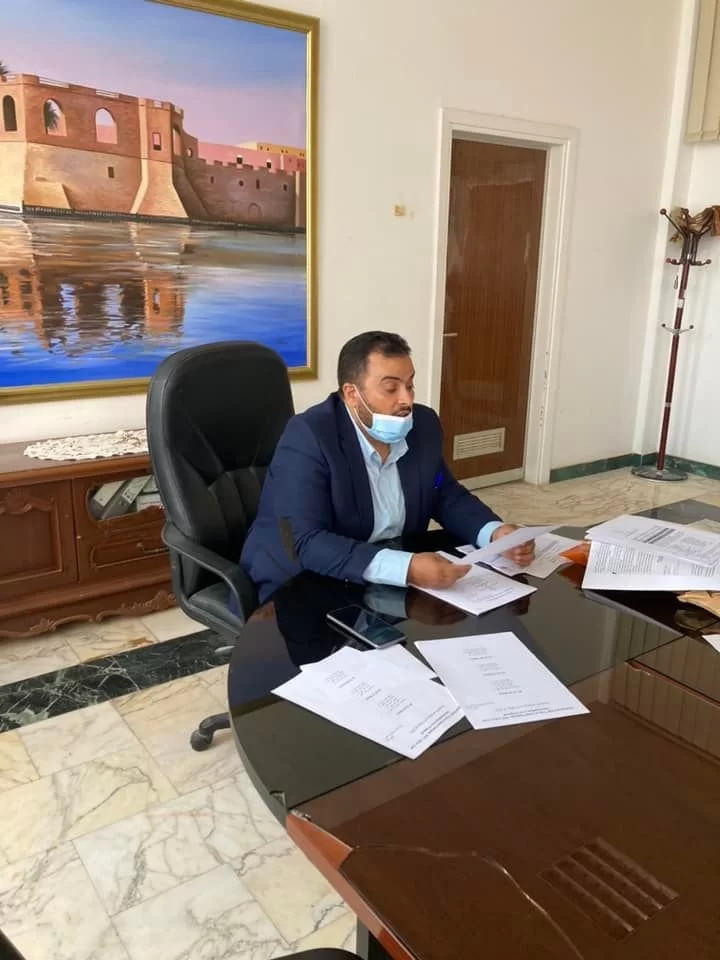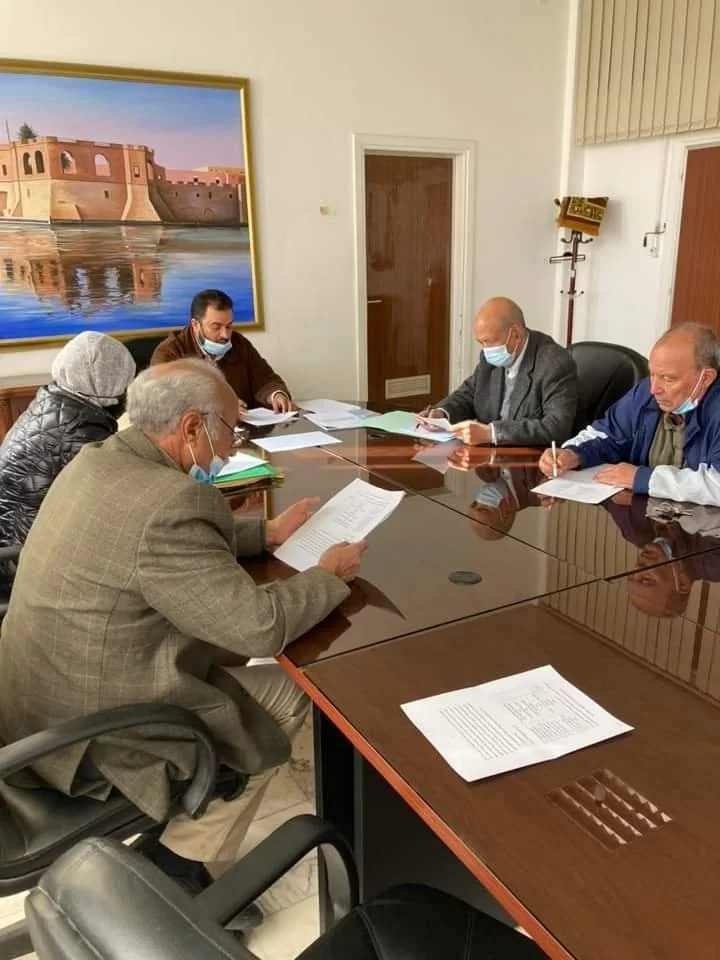قسم الجيولوجيا
المزيد ...حول قسم الجيولوجيا
دفع ظهور النفط في ليبيا، في نهاية خمسينيات القرن الماضي، كلية العلوم إلى التعاون مع شركات النفط العاملة بليبيا آنذاك وإنشاء قسم الجيولوجيا سنة 1960م. وقد تأسس القسم بعضوهيئة تدريس واحد وعدد 13 طالبا. وسرعان ما رسخ بناءه كقسم جيولوجيا متكامل يغطي الفروع الأساسية من علوم الأرض، وقبل تخرج أول دفعة منه سنة 1964م أصبحت المعامل الرئيسية مكتملة والمراجع متوفرة وبه عدد 6 من أعضاء هيئة التدريس و77 طالباً.
وضع القسم من أولوياته بناء الكوادر الوطنية حيث تم إرسال العديد من الخريجين المتفوقين في الدفعات الأولى إلى جامعات ذات مستوى رفيع في الولايات المتحدة الأمريكية والمملكة المتحدة للدراسات العليا والذين تمكنوا من استكمال دراساتهم في أعرق الجامعات مؤكدين بذلك على متانة التعليم الجيولوجي بقسم الجيولوجيا وهو نسق أستمر إلى الآن حيث استطاع كل خريجي القسم الذين ابتعثوا للدراسة بالخارج من الشركات والمؤسسات المختلفة استكمال دراستهم العليا في مختلف جامعات العالم دون عراقيل تذكر. إن نجاح خريجي القسم في حياتهم المهنية في المؤسسة الوطنية للنفط وشركاتها والشركات الأجنبية العاملة في ليبيا وكذلك في قطاعات البحث العلمي والتخريط الجيولوجي والكشف عن المعادن وفي قطاع المياه لخير دليل على استقرار البرامج التعليمية بالقسم وتمكنها من تلبية الحاجات الأساسية لكل هذه القطاعات.
أقام قسم الجيولوجيا سنة 1969 مؤتمراً جيولوجياً على مستوى عالمي صدرت مجموعة أبحاثه في مجلد يعد أول توثيق علمي عن جيولوجية ليبيا باللغة الانجليزية. وقد شجع نجاح هذه الندوة القسم على الاستمرار وعقد الحلقة الثانية سنة 1978م والثالثة سنة 1987م حيث كانت حصيلتهما 7 مجلدات تمثل إلى الآن مرجعاً أساسياً عن جيولوجية ليبيا ونشرتا عن داري جون وأيلي الإنجليزية والسيفير الهولندية المرموقتين ولازالت تلك المجلدات تلقي طلباً عالمياً من المكتبات العلمية حول العالم.
لم يتوانى قسم الجيولوجيا عن أداء واجباته في إمداد عجلة التنمية والتطوير في البلاد بالعناصر المؤهلة والمدربة في مختلف التخصصات الجيولوجية الحديثة في مجالات جيولوجية النفط والمعادن والمياه والتخريط الجيولوجي ودراسة التكوينات الجيولوجية في جميع ربوع ليبيا، ولعل المنشورات العلمية لهذه القطاعات خير شاهد على هذا الثراء العلمي.
تم تخريج المئات من الجيولوجيين من القسم والذين يعملون في الجامعات وشركات النفط والمؤسسة الوطنية للنفط والمعهد الليبي للنفط وجهاز النهر الصناعي ومركز البحوث الصناعية والهيئة العامة للمياه والقوات المسلحة والمركز الليبي للاستشعار عن بعد وعلوم الفضاء ومركز البيروني للاستشعار عن بعد ومؤسسة الطاقة الذرية والمؤسسة الوطنية للتعدين والعديد من مؤسسات وشركات الدولة والقطاع الخاص وقد ترأس خريجوه الوزارات والهيئات والمؤسسات والقطاعات العلمية ومراكز البحث العلمي والجامعات والكليات العلمية خلال الخمس عقود الماضية إضافة إلى التمثيليات الدولية في اليونيسكو وغيرها.
أصبح قسم الجيولوجيا أحد التخصصات العلمية التطبيقية بالكلية العلمية الأم في ليبيا ويعتبر أحد الدعائم الأساسية والمتينة التي تعتمد عليها نهضة وتقدم ليبياالحديثة، نظراً لمشاركته الفعالة في تنفيذ برامج وخطط التنمية وذلك بمساهمة أعضاء هيئة التدريس والخريجين في تقديم الاستشارات العلمية وتنفيذ بعض المشاريع البحثية للعديد من شركات النفط والقطاعات الأخرى التابعة للدولة والقطاع الخاص حسب الأسس والمعايير البحثية العلمية العالمية.
ينظم قسم الجيولوجيا رحلات حقلية تدريبية وبحثية مستمرة لمنطقة جبل نفوسة كما نظم رحلات إلى مناطق مختلفة من ليبيا مثل الجبل الأخضر والجفرة والهروج وواو الناموس ووادي موريزيدي واوزو بتيبستى والقرقاف ودور الطلح وجبل السوداء وغيرها.
أصبح قسم الجيولوجيا المقر الدائم للجمعية الليبية لعلوم الأرض منذ إعادة اشهارها سنة 1974م والتي لها نشاط علمي مميز تمثل في نشر العديد من وقائع المؤتمرات الجيولوجية التي عقدتها عبرالسنين والتي أصبحت من الوثائق الهامة والمعتمدة عالمياً والتي ساهم أساتذته في الإعداد لها وتحريرها.
حقائق حول قسم الجيولوجيا
نفتخر بما نقدمه للمجتمع والعالم
المنشورات العلمية
هيئة التدريس
الطلبة
الخريجون
أخبار قسم الجيولوجيا
من يعمل بـقسم الجيولوجيا
يوجد بـقسم الجيولوجيا أكثر من 17 عضو هيئة تدريس

أ. عبدالرحيم محمد محمد احويش









